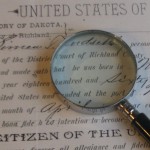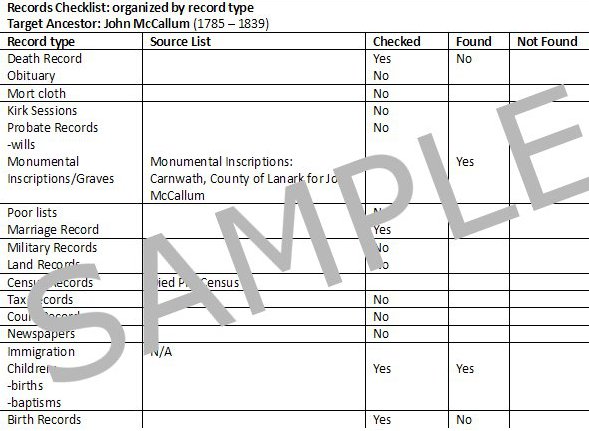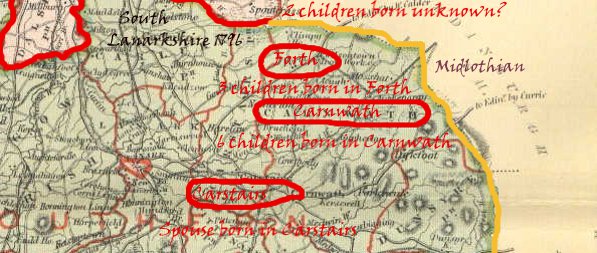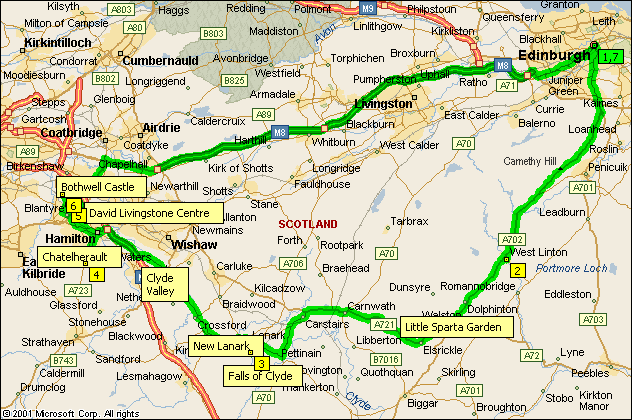Search results
Genealogy Brick Walls: Look In the Unlikely Places
March 18, 2012 by ramona
Filed under Articles, Genealogy Searches by Place, Introduction to Genealogy, Latest News
 Hitting a brick wall in your family tree is an extremely frustrating experience for every family tree enthusiast from the novice to the advanced. Especially after, you have spent hours combing through all of the obvious records. When you have already checked the church records, civil records, obituaries, newspaper archives, immigration records and census…do not give up. Just realize that it is time to pull out your shovel and start digging deeper.
Hitting a brick wall in your family tree is an extremely frustrating experience for every family tree enthusiast from the novice to the advanced. Especially after, you have spent hours combing through all of the obvious records. When you have already checked the church records, civil records, obituaries, newspaper archives, immigration records and census…do not give up. Just realize that it is time to pull out your shovel and start digging deeper.
In short, after you have looked in all of the likely places the only places left to check are the unlikely ones.
Genealogy in the Unlikely Places
The unlikely places are usually the ones you ruled out your first time through. You may be very surprised at how much information you can find by looking in records that seemed irrelevant or illogical to your family tree research.
Finding Ancestors in Land Records
You have ruled this out because your ancestor did not own land, but did you know you could still find the record of a lease for a tenant farmer or rental agreement for your Great, Great Grandma’s city home.
Your Family Tree and Depositions
You have probably already checked the immigration records to see if your ancestors changed their name upon landing in the new country. However, did you know that many immigrants did not change their names until they were already naturalized citizens? If your ancestor decided to change their name after becoming a naturalized citizen, you would find this information in court records as depositions.
Name changes of this type often happened because immigrants felt a foreign name made their lives more difficult in their new home. If your ancestor has pulled a disappearing act, searching depositions for name changes would be a good place to start.
Historical Societies and Genealogy
Your local historical society (or the local historical society where your ancestor lived) may hold the clues you have been looking for. Historical societies are notorious for holding little known documents and unpublished works that are only listed within their collection.
One Family Tree Search is Never Enough
Newspaper archives may be something you have already checked. Nevertheless, you should try them again. Many genealogy beginners give up far too soon on this information source by stopping at a single search type. Any search of a newspaper archive should be undertaken with three search strategies.
- Search by Name
- Search by Date
- Search by Location
A newspaper can hold so much information in a single issue that not all names are indexed. That is why a three-tier search is necessary.
Although sometimes a brick wall in your genealogy research is due to records being lost in fires and wars, poor preservation and/or the records were simply not kept. The biggest problem with brick walls is that family enthusiasts either give up too soon or just don’t know where to look next. Should you have any questions or want a little extra help tackling your brick wall, please feel welcome to post your questions to the Ask a Genealogist forum. Genealogy Beginner looks forward to hearing from you.
Image Credit: Ramona Hartley
Genealogy Brick Walls: Look In the Unlikely Places
 Hitting a brick wall in your family tree is an extremely frustrating experience for every family tree enthusiast from the novice to the advanced. Especially after, you have spent hours combing through all of the obvious records. When you have already checked the church records, civil records, obituaries, newspaper archives, immigration records and census…do not give up. Just realize that it is time to pull out your shovel and start digging deeper.
Hitting a brick wall in your family tree is an extremely frustrating experience for every family tree enthusiast from the novice to the advanced. Especially after, you have spent hours combing through all of the obvious records. When you have already checked the church records, civil records, obituaries, newspaper archives, immigration records and census…do not give up. Just realize that it is time to pull out your shovel and start digging deeper.
In short, after you have looked in all of the likely places the only places left to check are the unlikely ones.
Genealogy in the Unlikely Places
The unlikely places are usually the ones you ruled out your first time through. You may be very surprised at how much information you can find by looking in records that seemed irrelevant or illogical to your family tree research.
Finding Ancestors in Land Records
You have ruled this out because your ancestor did not own land, but did you know you could still find the record of a lease for a tenant farmer or rental agreement for your Great, Great Grandma’s city home.
Your Family Tree and Depositions
You have probably already checked the immigration records to see if your ancestors changed their name upon landing in the new country. However, did you know that many immigrants did not change their names until they were already naturalized citizens? If your ancestor decided to change their name after becoming a naturalized citizen, you would find this information in court records as depositions.
Name changes of this type often happened because immigrants felt a foreign name made their lives more difficult in their new home. If your ancestor has pulled a disappearing act, searching depositions for name changes would be a good place to start.
Historical Societies and Genealogy
Your local historical society (or the local historical society where your ancestor lived) may hold the clues you have been looking for. Historical societies are notorious for holding little known documents and unpublished works that are only listed within their collection.
One Family Tree Search is Never Enough
Newspaper archives may be something you have already checked. Nevertheless, you should try them again. Many genealogy beginners give up far too soon on this information source by stopping at a single search type. Any search of a newspaper archive should be undertaken with three search strategies.
- Search by Name
- Search by Date
- Search by Location
A newspaper can hold so much information in a single issue that not all names are indexed. That is why a three-tier search is necessary.
Although sometimes a brick wall in your genealogy research is due to records being lost in fires and wars, poor preservation and/or the records were simply not kept. The biggest problem with brick walls is that family enthusiasts either give up too soon or just don’t know where to look next. Should you have any questions or want a little extra help tackling your brick wall, please feel welcome to post your questions to the Ask a Genealogist forum. Genealogy Beginner looks forward to hearing from you.
Image Credit: Ramona Hartley
Genealogy Brick Walls: The Problem of Names
March 8, 2012 by ramona
Filed under Articles, Genealogy and Surnames, Introduction to Genealogy, Latest News
Nothing can stop your family tree research in its tracks like not being able to find your ancestors records. Usually, this boils down to the big four problems of names.
- Common names give too many options
- Spelling variations lead to confusion
- Misspellings can frustrate your efforts
- Indexing errors…are a fact of genealogy research
Brick Wall Problems with Common Names
The issue with common names is that they offer too many possibilities. If your ancestor is Joe Smith or Ole Olson your main question is going to be which one is mine? For example, a quick search for Ole Oleson, born 1830 in Rendalen, Norway, returns 632 records. You are going to need to employ some hard-core search strategies to find your Ole Oleson.
Brick Wall Problems with Spelling Variations and Spelling Mistakes
At the time of the early census there was no standardization for the spelling of names, consequently names were often spelled phonetically. Add to this the fact that not everyone had access to education (your ancestor may not have been able to spell or write their name) and it is not hard to imagine why we come up with so many variations on a single surname.
Another common problem of the time was simple human error. Spelling mistakes occurred frequently and for the same reasons as stated above. Additionally, immigrant ancestors may not have had a strong enough grasp of English to catch errors or perhaps the census taker had a difficult time understanding them.
On the other hand, they may have altered their name to a more anglicized version or changed it altogether.
Brick Wall Problems with Indexing Errors
Thank goodness for the volunteers who spend hours transcribing documents, these wonderful people are the ones responsible for making records readily available to family tree enthusiasts. I would never fault them for their efforts. If you have ever spent time as a volunteer indexer you would agree, old writing is sometimes so faded or illegible that mistakes are unavoidable.
In spite of the problem of names, brick walls can be annihilated. Here are a few approaches you can use to overcome them.
Brick Wall Genealogy General Rules of Thumb:
- Use Wild Card and Boolean searches
- Make a list of all possible spellings of your ancestor’s surname
- Find an ancestor with an uncommon first name and search with that to find your family
- Combine your search to include a spouse’s name
Common names, surname variants, misspellings and indexing errors while problematic are not insurmountable. Using some of the above brick wall tips combined with a sound research strategy read (Brick Wall Breakthroughs for Genealogy Beginners) will give you the tools to break down your brick wall and move forward with your research. Join us in the forum Ask a Genealogist where you will find four key strategies to solving your brick wall problem with names.
Image Credit: Ramona Hartley
Brick Wall Breakthroughs for Genealogy Beginners
March 4, 2012 by ramona
Filed under Articles, Genealogy Reports and Charts, Introduction to Genealogy, Latest News, Lesson 3 Articles
Brick wall busting is all about problem solving and detective work. However before you can begin to break down your brick wall you need to define exactly what the problem is.
The top four most common causes of brick walls:
Your brick wall may even stem from a combination of the above and that can feel like an overwhelming challenge to the genealogy beginner. What you need are the tools and strategies to keep you from being overwhelmed and that is the first step towards solving your brick wall problem.
Developing Your Brick Wall Search Strategy
A good search strategy for brick walls comes down to initiating three core actions:
Review Genealogy Your Data
Even if you have looked over your data a hundred times…do it again. The reason for implementing this strategy is to find the holes or weak points in your brick wall. For example, large time gaps between children are a big red flag; they indicate an area you need to look into more intensely. Locating the areas where you have gaps in your information will give you leads.
Chart Your Genealogy Research
After you have reviewed your information, chart it. Charting your research will give you an overview that can help you analyze information and spot gaps. A records checklist is one of the best charting strategies, although there are several you can work from to help achieve your goals.

Map Your Locations
In addition to charting your research, another helpful search strategy is mapping. You may find that mapping your family tree will help you understand a little more about your ancestor’s lives as well as assist you in breaking down a brick wall.
Old Maps and Genealogy
Locating and using old maps can be a valuable resource for making a brick wall breakthrough.
- Understanding where county boundaries existed
- Noting border changes
- Discovering old place names that no longer exist
- Understanding the topography (through this you may learn how your ancestors traveled).
All of these things will point you in new directions and help you to discover record sources you may not otherwise consider. Additionally, knowing the lay of the land back then can lead you to the governing body that holds the records today.
Plotting Your Genealogy Research Map
Knowing your ancestors residences, where their children were born, where their spouse was born and where their relatives lived can help fill in gaps. The best way to develop a strong concept of this is to plot a map listing all of these locations.
Lanarkshire Map 1796

When you have finished plotting your historic map, plot a modern one, and then compare them for missing parishes or towns as well as county border changes.
Modern Lanarkshire Map

Once you have all of your information charted and mapped out, you will be prepared to make a full and comprehensive search that should help you break your brick wall.
Charting and mapping are only a few of the strategies you can use to help solve your brick wall problems. Genealogy Beginner will be bringing you more invaluable brick wall strategies very soon. For now, join us in the Ask a Genealogist forum and find more tips on charting your research.
Image Credit: Ramona Hartley
A Non-Traditional Family Tree
January 2, 2012 by ramona
Filed under Articles, Latest News, Lesson 2 Articles
 Genealogybeginner.com is set to tackle same sex marriage, test tube babies and strong opinions.
Genealogybeginner.com is set to tackle same sex marriage, test tube babies and strong opinions.
Last week genealogybeginner.com received a post on our forums that brought up a very timely and relevant issue. The subject of this thought provoking post… how to record non-traditional relationships in your family tree.
This significant topic tends to bring up far more questions than answers. It has also sparked more than a few passionate debates among genealogists.
A Blended Family Tree
The definition of family has certainly shifted. From the narrow boundaries of the nuclear family common in our great grandparent’s day, to our current culture of:
– Blended families
– Common law unions
– Same-sex marriages
Add to this the further complications of test tube babies and children conceived by surrogate mothers; then try to decide how to document and record these events.
Genealogy Purist or Genealogy Radical
In the genealogy world, there are definitely some strong opinions on the subject with two main schools of thought.
One school of thought comes from a purest view that insists; only direct genetic relationships have a place in your family tree. This view is the same one that states aunts, uncles, cousins and even siblings have no place in the genealogical record.
The second school of thought makes a case for recording all information about a family group. The argument on this side of the fence states that if there is an existing record then the information should be included.
No matter what your personal view, genealogy has yet to come up with a software program equipped to deal with it all.
Ask a Genealogist
See this post on the Ask a Genealogist forum. Let us know if you would like more information on how to record non-traditional relationships. We welcome questions dealing with the documentation of complicated offspring.
Image Credit: SoDigitallyMevia Photobucket


